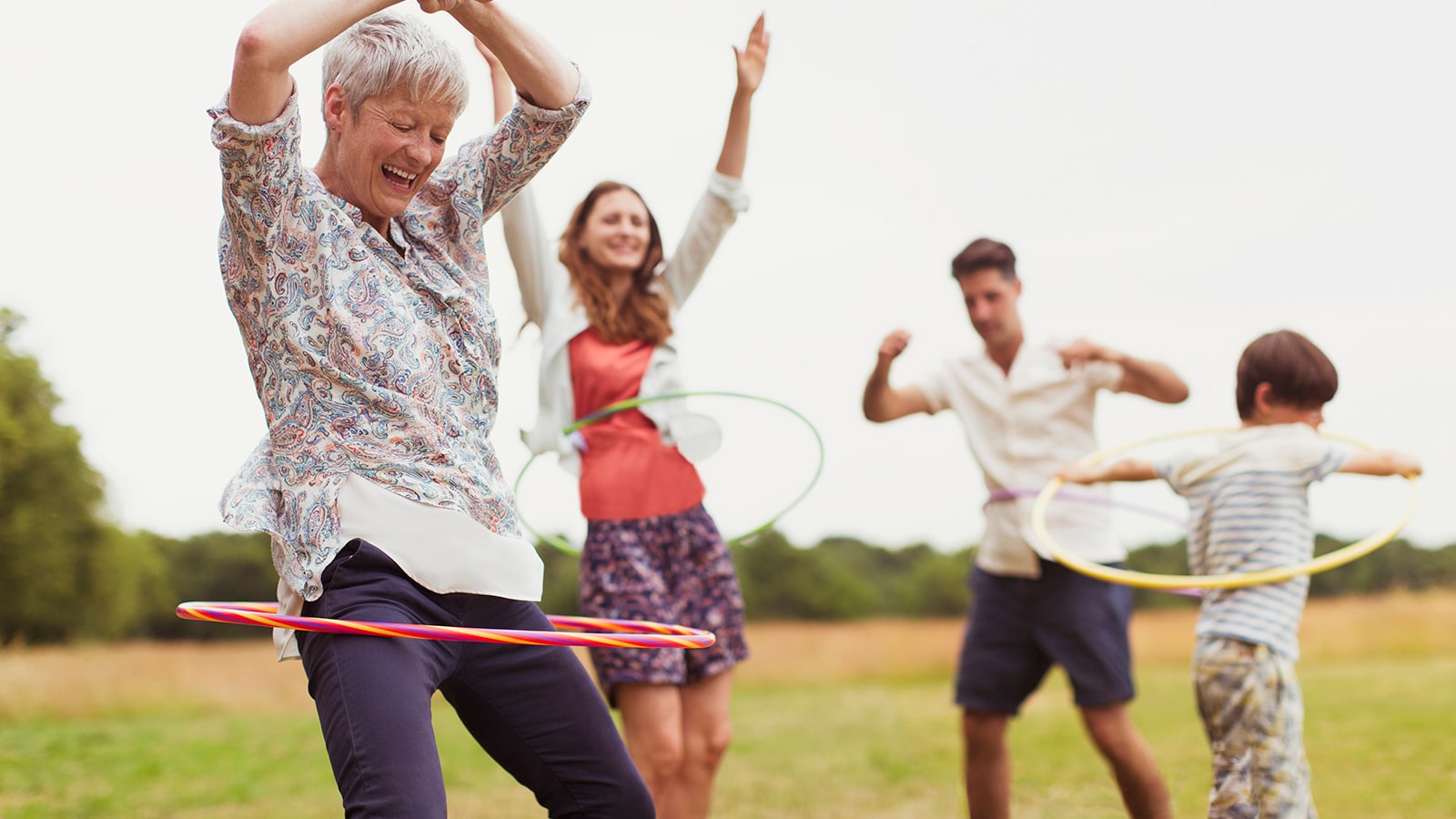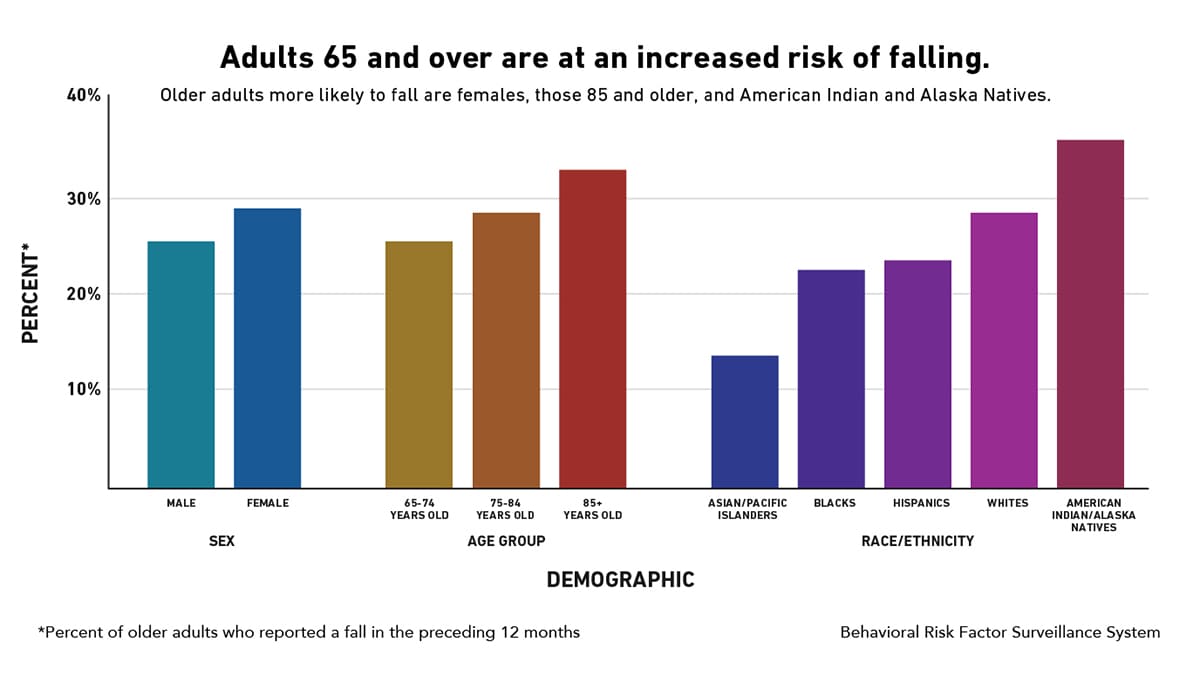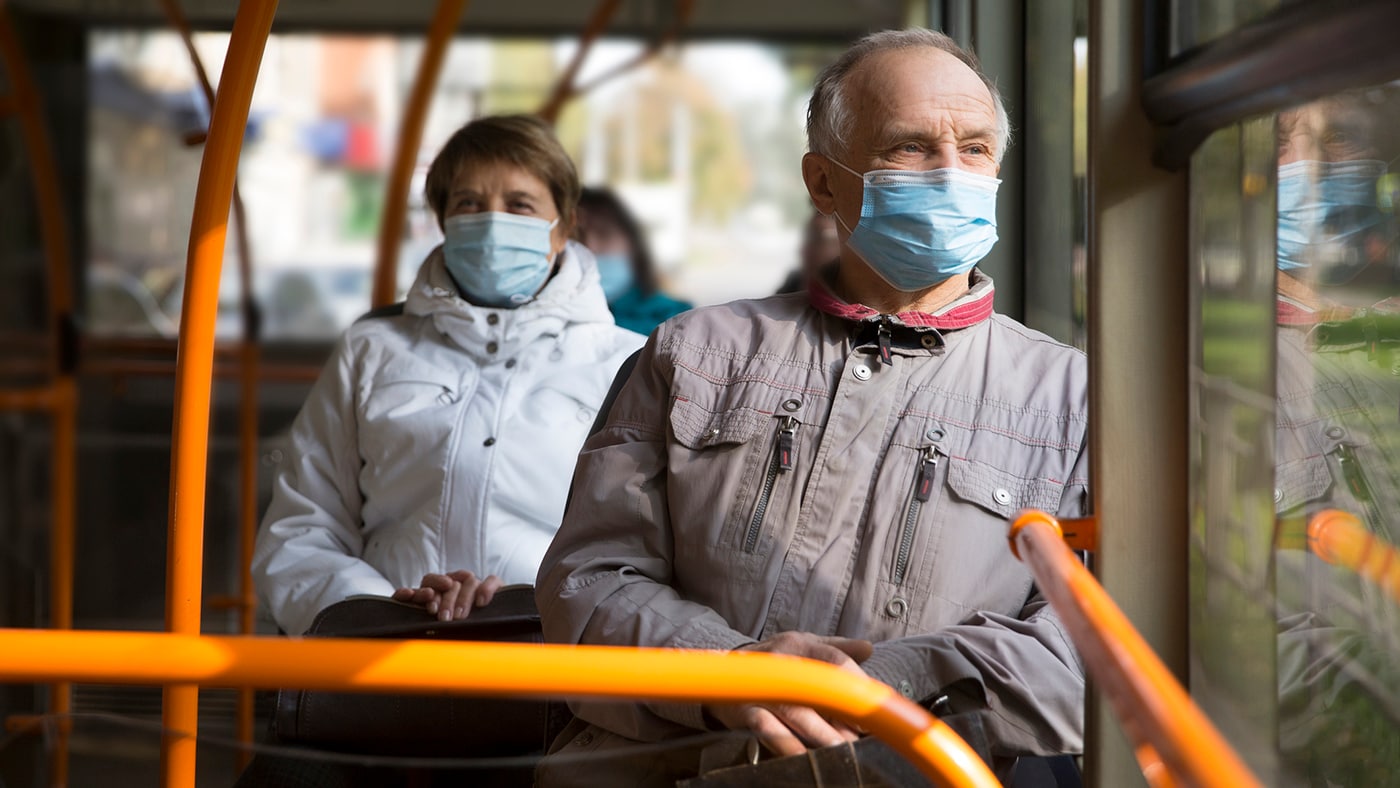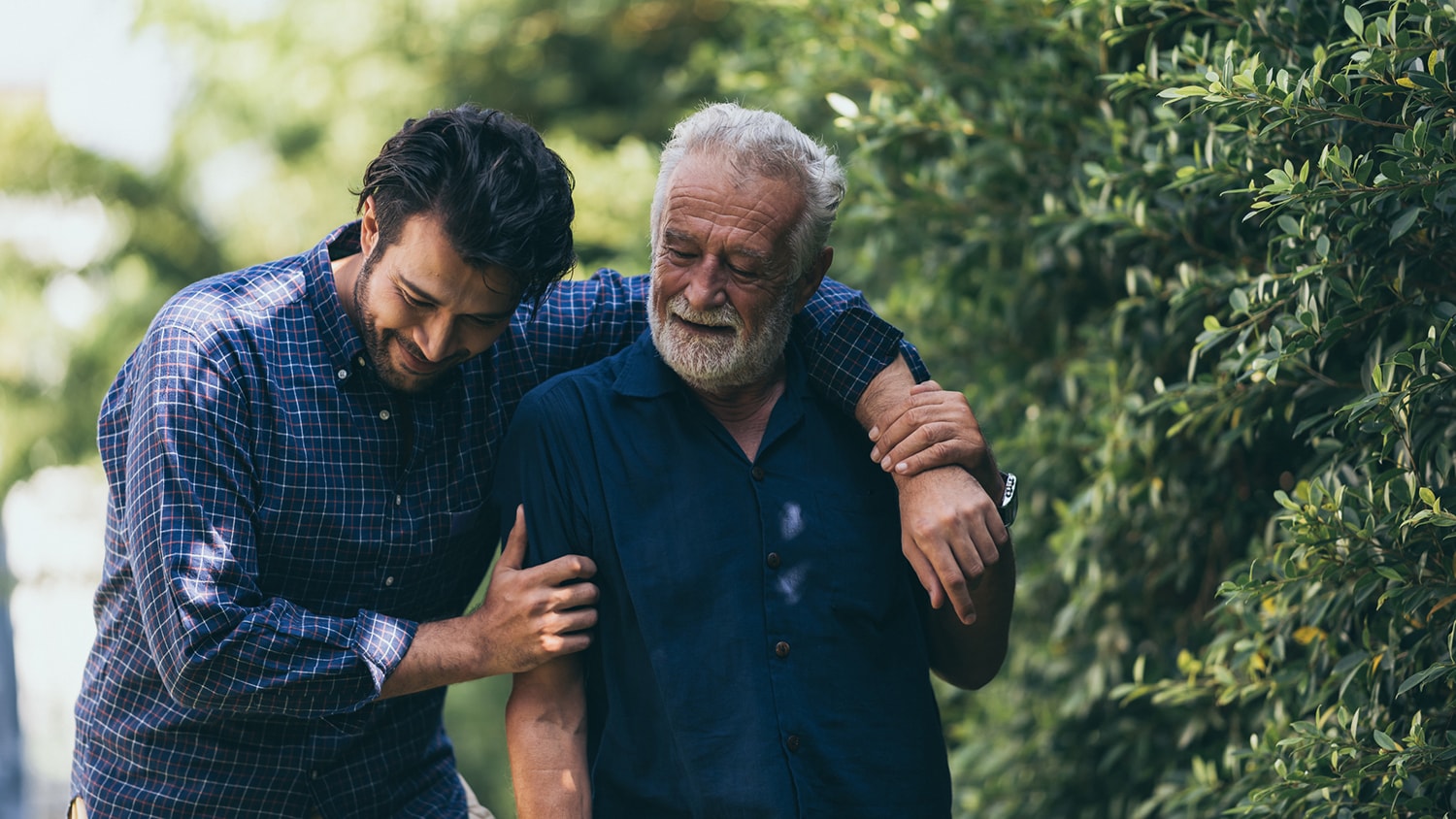At a glance
There are millions of people in this country who provide care (unpaid or paid) for an adult age 65 and older (older adult)—a parent, grandparent, other family member, or a close friend. The older adult's health is often your main concern. Maintaining an older adult's health includes preventing unintentional injuries, such as those from falls. Below you will find resources to help increase your understanding of what you can do to help prevent these injuries.
Social connectedness
Social connectedness is the degree to which people feel they belong and are supported and valued in their relationships with others. A lack of social contacts (or social isolation), feelings of loneliness, or feeling disconnected from others are common experiences for older adults and can lead to negative effects on their physical health and emotional wellbeing.12 People who have close, supportive relationships tend to have:2
- Longer lives
- Less stress
- Better overall physical and emotional health
- Fewer feelings of loneliness
- Greater quality of life
What does social connectedness look like?
- Meaningful relationships with others345
- Consistent, positive interactions with others345
- Supportive relationships where you feel valued and cared for5
- Emotional support during difficult times and physical support, like running errands or a ride to an appointment5
What can you do to help your loved one improve their social connectedness?

- Do things with them that they already enjoy doing, such as taking a walk or knitting
- Help them visit community areas such as parks, places of worship, and senior centers
- Help them participate in new activities and hobbies with others, such as:
- Cooking and baking
- Gardening
- Group sports, like golf and pickleball
- Outdoor adventures, like hiking and kayaking
- Crafts, like knitting and woodworking
- Group exercise, like water aerobics and dancing
- Arts, like painting and ceramics
- Book clubs
- Card or board games
- Faith-based activities
- Cooking and baking
- Encourage them to maintain regular in-person interactions with friends and family and connect with them by phone or video calls
Keep them moving.
- Engage them in activities like walking, household chores, and errands to the store
- Modify activities as needed based on their current physical ability
Identify challenges and work on solutions, together
Social connection resources for caregivers
Preventing a fall
Falls in people age 65 and older are common and can lead to serious injury, reduced mobility and quality of life, or death.67 Fall injuries can be severe—including hip fractures and traumatic brain injury, or TBI.8 Falls can result in a permanent disability, prolonged hospitalizations, and nursing home admission.6

What can you do to prevent your loved ones from falling?
Speak up.
- Talk openly with your loved ones and their healthcare provider(s) about fall risks and prevention.

Keep them moving.
- Check with your loved one's healthcare provider to see if it's safe for them to participate in strength and balance exercises, such as Tai Chi.
Have their eyes and feet checked.
- Have your loved one's eyes checked by an eye doctor at least once a year and replace eyeglasses as needed.
- Have a healthcare provider check their feet once a year and discuss proper footwear.
- Help your loved one get rid of trip hazards, like throw rugs, and keep floors clutter free.
- Brighten their home with extra lighting or brighter light bulbs.
- Install grab bars in the bathroom(s)—next to the toilet and inside and outside of their bathtub or shower.
- Install handrails on both sides of staircases.
Fall prevention resources for caregivers
- Family Caregivers: Protect Your Loved Ones from Falling (English | Spanish) [2 pages]
- Older Adult Falls: A Growing Burden [4 pages]
- Medications Linked to Falls [1 page]
- Check for Safety (English | Spanish) [2 pages]
- STEADI Fall Prevention Videos
- Measuring Orthostatic Blood Pressure (English | Spanish) [1-2 pages]
- MyMobility Plan (English | Spanish | Tribal) [8 pages]
- Fall Risk Screening Tool: Falls Free CheckUp
Motor vehicle safety
As Americans live longer, there are more older adults (age 65 and older) driving longer. There were more than 50 million licensed older adult drivers in 2022.9
Driving helps keep older adults mobile and independent, but their risk of injury in a motor vehicle crash increases as they get older. More than 200,000 older adults were treated in emergency departments for crash injuries in 2021.10 This means more than 550 sustain an injury every day in motor vehicle crashes.10
What can you do to help your loved ones prevent motor vehicle crashes?
Wear seat belts.
- Encourage your loved one to always wear their seat belt as a driver and as a passenger. Seat belt use is one of the most effective ways to save lives and reduce injuries in crashes.
Drive safe.
- Encourage your loved one to only drive when conditions are safest.
- Conditions, such as poor weather, like rain or snow, and driving at night, increase the likelihood of crash injuries and deaths.
Use transportation options.

- Encourage your loved one to use a ride share service, public transportation, or offer to drive them yourself. The risk of motor vehicle crashes resulting in injuries or death increase with age.
Motor vehicle safety resources for caregivers
Traumatic brain injury
Traumatic brain injury, or TBI, is caused by a bump, blow, or jolt to the head, or a penetrating injury such as when an object enters the skull and harms the brain that affects how the brain works. Falls and motor vehicle crashes are two leading causes of TBI-related hospitalizations and deaths among older adults.11

A TBI may lead to short- or long-term problems with how a person feels, thinks, acts, or sleeps. Older adults who get a TBI may face health problems that last a few days or the rest of their lives, depending on the severity of the injury.
Older adults are more likely to have a hospital stay and die from a TBI compared to other age groups.11 TBIs may also be missed or misdiagnosed because symptoms of TBI overlap with other medical conditions that are common among older adults, such as when older adults have multiple injuries.
Older adults should be checked by a healthcare provider for signs and symptoms of a TBI if they have fallen or were in a car crash.
Danger signs in adults
In rare cases, a stroke can occur as a blood clot in a vessel or a burst vessel that bleeds, limiting blood supply to the brain and affecting brain function.12 Call 9-1-1 or take the older adult in your care to an emergency department right away if they:
- Have a headache that gets worse and does not go away
- Experience weakness, numbness, decreased coordination, convulsions, or seizures
- Vomit repeatedly
- Have slurred speech or unusual behavior
- Have one pupil (the black part in the middle of the eye) larger than the other
- Cannot recognize people or places, get confused, restless, or agitated
- Lose consciousness, look very drowsy, or cannot wake up
What can you do to prevent a TBI in your loved ones?

Practice fall prevention.
- Follow the how you can prevent a fall
Increase motor vehicle safety.
- Follow the increasing motor vehicle safety
What are the signs and symptoms of TBI?
Signs and symptoms of a TBI can range from mild (such as concussion), moderate, or severe.13 Signs and symptoms of concussion or other mild TBI may be subtle. They can show up right after the injury or can take days to appear or be noticed.14 It may be easy to miss a concussion or other mild TBI because sometimes the injured person looks fine but acts or feels differently. A person with a moderate or severe TBI may need to stay in the hospital or receive ongoing care to help with their recovery.1516
After a mild TBI or concussion, they may:14
- Not recognize or admit that they are having problems
- Not understand how the symptoms they are experiencing affect their daily activities
A moderate or severe TBI may result in an extended period of unconsciousness, also called a coma, or amnesia, which means forgetting things that happened before the TBI or having trouble remembering things after the TBI.13 The effects of a TBI are different for each person and may change during recovery.13 A moderate or severe TBI may affect all aspects of their life and they may struggle with:
- Social connectedness, employment, and physical and mental health1117
- Carrying out their daily activities1516
Learn the signs and symptoms of TBI and watch for them in the older adult in your care. Seek medical attention right away if you see any of the danger signs listed above.
What should you do if you think the older adult in your care has a TBI?
Take them to get checked by their healthcare provider. Be sure to tell their healthcare provider about current medical conditions and medicines they are taking. This should include prescription and over-the-counter medicines. Blood thinners (such as anticoagulants like warfarin (Coumadin), rivaroxaban (Xarelto), and apixaban (Eliquis) and antiplatelet medications like clopidogrel (Plavix), ticagrelor (Brilinta), and acetylsalicylic acid (Aspirin)) increase the risk for bleeding in the brain after a TBI.18
Questions to ask the doctor
- When can they return to normal activities?
- Are there activities that should be avoided, such as exercise?
- When can they return to driving, if the injured person drives a car?
- What medicines should they take (or stop taking)?
- Are any other medicines allowed, such as acetaminophen (Tylenol)?
- Is alcohol allowed? If so, how much?
- What other problems, if any, should I look for?
- Is there special treatment or therapy needed, like physical therapy?
- When should we schedule a follow-up appointment?
How long is the recovery process?
How well a person recovers from a moderate or severe TBI depends on many factors such as:
- Health before the injury
- Type and severity of the TBI
- Access to healthcare and specialized TBI care
- Family and other social support13
Older adults in good health tend to have a better and faster recovery than those who are not as healthy, have medical conditions, or problems associated with aging. But remember, healing takes time. Taking time to rest right after the injury is very important, as it helps their brain heal. Ask their healthcare provider for instructions on how and when they can safely return to their normal activities and for recovery tips based on their symptoms.
TBI prevention resources for caregivers
- Holt-Lunstad J. Social Connection as a Public Health Issue: The Evidence and a Systemic Framework for Prioritizing the "Social" in Social Determinants of Health. Annu Rev Public Health. 2022;43:193-213.
- National Academies of Sciences, Engineering, and Medicine. Social Isolation and Loneliness in Older Adults: Opportunities for the Health Care System. National Academies Press (US); 2020. DOI: 10.17224/25663.
- Anderson GO, Thayer C. AARP Foundation. Loneliness and social connections: A national survey of adults 45 and older. AARP Research. 2018.
- Lee RM, Draper M, Lee S. Social connectedness, dysfunctional interpersonal behaviors, and psychological distress: Testing a mediator model. Journal of Counseling Psychology. 2001; 48(3):310-318.
- Holt-Lunstad J, Smith TB, Layton JB. Social relationships and mortality risk: A meta-analytic review. PLoS Med. 2010;7(7):e1000316.
- Gill T, Murphy T, Gahbauer E, Allore H. Association of Injurious Falls with Disability Outcomes and Nursing Home Admissions in Community-living Older Persons. Am J Epidemiol. 2013 Aug;178(3):418–25.
- Burns E, Kakara R. Deaths from Falls Among Persons Aged ≥65 Years — United States, 2007–2016. MMWR Morb Mortal Wkly. Rep. 2018 May;67(18):509–514
- Haddad Y, Shakya I, Moreland B, Kakara R, Bergen G. Injury Diagnosis and Affected Body Part for Nonfatal Fall-related Injuries in Community-dwelling Older Adults Treated in Emergency Departments. J Aging Health. 2020 Dec;32(10):1433–1442.
- U.S. Department of Transportation, Federal Highway Administration. Highway Statistics 2021 - Policy | Federal Highway Administration (dot.gov). Accessed 2023.
- Centers for Disease Control and Prevention, National Center for Injury Prevention and Control. Web-based Injury Statistics Query and Reporting System (WISQARS). Atlanta (GA). Accessed 2023.
- Centers for Disease Control and Prevention, National Center for Injury Prevention and Control. Surveillance Report of Traumatic Brain Injury-related Deaths by Age Group, Sex, and Mechanism of Injury—United States, 2018 and 2019. Centers for Disease Control and Prevention, U.S. Department of Health and Human Services.
- Easter JS, Haukoos JS, Meehan WP, Novack V, Edlow JA. Will Neuroimaging Reveal a Severe Intracranial Injury in This Adult With Minor Head Trauma?: The Rational Clinical Examination Systematic Review. JAMA. 2015 Dec 22-29;314(24):2672–81.
- Centers for Disease Control and Prevention, National Center for Injury Prevention and Control. Report to Congress on Traumatic Brain Injury in the United States: Epidemiology and Rehabilitation. Atlanta (GA): Centers for Disease Control and Prevention; 2015.
- Centers for Disease Control and Prevention, National Center for Injury Prevention and Control. Report to Congress on Mild Traumatic Brain Injury in the United States: Steps to Prevent a Serious Public Health Problem. Atlanta (GA): Centers for Disease Control and Prevention; 2003.
- Corrigan J, Cuthbert J, Harrison-Felix C, et al. US Population Estimates of Health and Social Outcomes 5 Years After Rehabilitation for Traumatic Brain Injury. J Head Trauma Rehabil. 2014;29(6):E1–9.
- Centers for Disease Control and Prevention, National Institutes of Health. Moderate to Severe Traumatic Brain Injury is a Lifelong Condition.
- Centers for Disease Control and Prevention, National Center for Injury Prevention and Control. Surveillance Report of Traumatic Brain Injury-related Emergency Department Visits, Hospitalizations, and Deaths—United States, 2014. Accessed 2019.
- Maegele M, Schöchl H, Menovsky T, Maréchal H, Marklund N, Buki A, Stanworth S. Coagulopathy and Haemorrhagic Progression in Traumatic Brain Injury: Advances in Mechanisms, Diagnosis, and Management. Lancet Neurol. 2017 Aug; 16(8):630–647.
